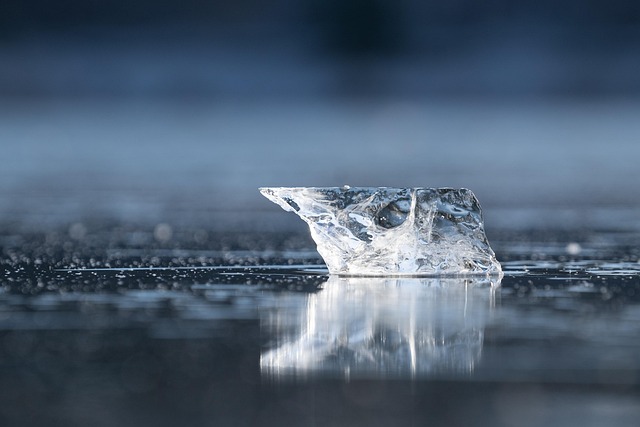Cold therapy, including ice packs, cold water immersion, and advanced techniques like cryotherapy, offers effective relief for migraines by reducing inflammation and nerve sensitivity. Ice packs provide immediate symptom alleviation, while specialized treatments aim for long-lasting results. These cooling techniques complement traditional migraine management, prevent central sensitization, and can be easily integrated into daily routines to manage and reduce the frequency of migraine episodes.
Headaches and migraines can be debilitating, but there’s a simple yet powerful solution gaining traction in the medical community: localized cold applications. This article explores the science behind cold therapy and its effectiveness in treating migraines and headaches. From traditional ice packs to advanced techniques like cryotherapy and water immersions, discover how these cooling techniques offer targeted relief, providing much-needed respite for those suffering from chronic pain. Learn practical tips for integrating cold therapy into your routine for better migraine management.
Understanding Migraines and Headaches: Unveiling the Science Behind Cold Therapy
Understanding Migraines and Headaches: Unveiling the Science Behind Cold Therapy
Migraines and headaches are common conditions that affect millions worldwide, often leading to significant discomfort and reduced quality of life. While various treatments exist, cold therapy for migraines has emerged as a popular and effective approach. The science behind this method lies in the body’s physiological response to cold stimulation. When a cold pack or ice pack is applied to the head or neck area, it triggers a series of reactions that can significantly alleviate migraine pain. Ice packs for migraine relief constrict blood vessels, reducing inflammation and nerve sensitivity, which are key contributors to headache and migraine discomfort.
Cryotherapy for migraines, including cold water immersion, involves prolonged exposure to extreme cold temperatures. This technique has been shown to disrupt the brain’s pain signaling pathways, providing long-lasting migraine pain relief. The benefits of a cold compress for headaches extend beyond immediate sensation; they can also prevent future episodes by reducing central sensitization, a process where nerve cells become more sensitive over time. Cooling techniques for headaches, such as applying an ice pack or immersing oneself in cold water, offer a natural and non-invasive way to manage these debilitating conditions, complementing traditional treatments and potentially revolutionizing the way folks navigate their pain management journeys.
The Power of Ice Packs and Cold Compresses: Targeted Relief for Pain
The Power of Ice Packs and Cold Compresses: Targeted Relief for Pain
Cold therapy, particularly using ice packs and cold compresses, is a game-changer in managing head pain, especially migraines. The application of cold directly to the affected area can significantly reduce inflammation and numb nerve endings, providing much-needed relief from throbbing migraine pain. This targeted approach ensures that the cooling effect soothes the brain and blood vessels, helping to alleviate symptoms quickly and effectively.
Ice packs for migraine relief have long been a go-to remedy due to their accessibility and affordability. However, modern cold therapy extends beyond simple ice cubes. Techniques like cold water immersion, where one soaks in cool or even icy water, offer profound benefits for chronic head pain sufferers. Moreover, cryotherapy—short, extreme cold exposure sessions—has gained popularity as a non-invasive treatment option, providing rapid migraine pain relief and potentially reducing the frequency of future episodes. The benefits of cold compresses for headaches are well documented, making these cooling techniques valuable tools in any headache management strategy.
Exploring Advanced Techniques: Cryotherapy, Water Immersions, and Cooling Gadgets
Exploring Advanced Techniques offers a promising path for those seeking effective migraine relief. Cryotherapy, or cold therapy, involves exposing the body to extreme cold, which has been shown to reduce inflammation and constrict blood vessels, offering significant benefits for head pain management. A simple ice pack can provide immediate relief during an attack, but more advanced cryotherapy sessions in specialized clinics may offer longer-lasting results.
Water immersions take this concept further, utilizing the natural cooling properties of water to induce a state of calm and reduce inflammation. This technique has gained popularity for its potential to not only alleviate migraine pain but also improve overall well-being. Cooling gadgets, such as cold compresses or specialized headbands, provide an accessible at-home option, allowing individuals to experience the benefits of cold therapy between migraines. These innovative approaches complement traditional methods, offering a multi-faceted strategy for managing this debilitating condition.
Integrating Cold Therapy into Your Routine: Tips for Effective Migraine Management
Integrating cold therapy into your daily routine can significantly enhance migraine management and offer much-needed relief from intense head pain. Cold therapy, including techniques like applying an ice pack, cold water immersion, or using cryotherapy, has been scientifically proven to reduce inflammation and constrict blood vessels, which can help alleviate migraine symptoms. By incorporating cooling techniques into your self-care regimen, you can gain better control over frequent migraines.
For effective results, consider these tips: keep an ice pack readily available for quick applications during migraine episodes, experiment with cold water immersions as a relaxing and therapeutic treatment, and explore cryotherapy sessions at specialized facilities. Additionally, remember that consistency is key; regular use of these cold therapy methods can prevent migraines from escalating.
Cold therapy offers a promising and accessible solution for managing migraines and headaches. By employing simple tools like ice packs and advanced techniques such as cryotherapy and cold water immersions, individuals can gain targeted relief from painful symptoms. Integrating these cooling techniques into daily routines proves beneficial for effective migraine prevention and control. Whether it’s the science-backed power of ice or innovative gadgets, cold therapy is a game-changer in navigating head pain, providing natural and potentially life-changing remedies.
